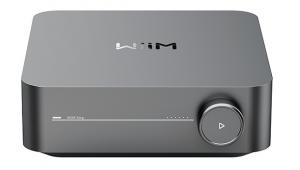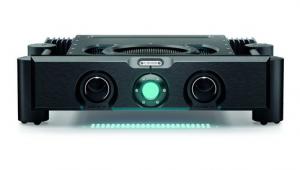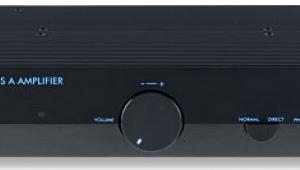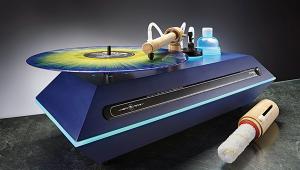Pioneer Sc Lx90 (£5000)
Pioneer’s flagship Susano amplifier arrived amidst an unseasonable summer tempest that lashed the south of England with high winds and heavy rain. An auspicious start for an amplifier that derives its name from the ancient Japanese god of storms. Sadly, divine intervention didn’t go so far as helping me carry it to the listening room because it’s the size and weight of a small stone temple.
The SC-LX90 is Pioneer’s statement of intent at the upper echelons of the AV amplifier market, sharing the same piano-black fascia and cosmetic cues as the company’s top-end plasma screens. And there’s no denying it’s a bit of a looker. The fit and finish is exemplary, the styling subtly sophisticated for such a massive beast and the cabinet surpasses even Denon’s battleship AVC-A1HD for sheer build quality.
Internally the design runs to the usual extremes of Japanese hi-fidelity fastidiousness and sumptuous component choice. The result is nearly 36kg of AV processor/preamp and ten channels of power claiming 140W into 8ohm. Unlike the direct competition, the Denon and Yamaha’s DSP-Z11, the SC-LX70 uses Class D ICEpower modules rather than traditional Class A/B analogue power stages.
This ought to reduce weight, size and power consumption – a theory somewhat denied by its sheer mass and the sizeable cooling fans. The reason is explained by the Susano’s sonic prowess, says Pioneer (albeit in a 10-page PDF document rather than in those few words). Not only is this a THX Ultra2 Plus approved amp, it carries the AIR Studios ‘Monitor reference’ seal of sonic approval – its highest recognition.
A TINY GRIPE OR TWO
In terms of features, the answer is ‘yes it does’ to almost every question that starts ‘does it...?’. The complete list can be found taking up a fair hunk of Pioneer’s website but it would be rude not to mention the cutting-edge 1.3a HDMI connectivity and the legacy RF AC3 input should your old Pioneer LD player still be alive and kicking. On the down-side there is little on-board video processing aside from simple analogue video up-conversion to HDMI. But if you have a decent source and decent display this is rather a moot point anyway.
Perhaps my only significant gripes are operational ones. For starters you actually have to power-up and assign speaker outputs (simply numbered L1-L5 and R1-R5) before powering down to connect the speakers.
Not only is the on-screen menu a rather dull, simple text rather than a gorgeous GUI, that sexy LCD display is not what it seems. Unlike older Parasound and Rotel AV preamps that have featured LCD screens to display the input video image, the SC-LX90’s screen is a glorified fascia display. It is actually mono with a switchable blue or yellow backlight rather than full-colour and will only show the operational menus rather than input video.
This is an opportunity missed for those who like their multichannel music, because it could have afforded access to disc set-up and playback menus without having to boot-up your TV or projector. Doh!
LAST OF MY SUPER-AMPS
Like all higher-end modern AV hardware, the ’LX90 is also festooned with audio-processing and filtering trickery, Ethernet network connection and DLNA media streaming compatibility. The filtering is initially controlled through the auto-set-up routine and fairly easy to disable when you get the hang of it. However, the default setting is ‘all trickery on’ and even if you switch all this gadgetry off, a mere suggestive look at the menu re-engages the audio equivalent of ABS, traction control and an annoying beep if your seat belt isn’t fastened. On the up-side, the single remote control is simple yet superb and far easier to use than Denon’s fancy EL-backlit device.
Being the last of 2008’s tranche of HD super-amps to grace my listening room, the Susano had a lot to live up to: Yamaha had to send the boys round to relieve me of the ’Z11 sample, and I loved Denon’s AVC-A1HD so much I sold my car to buy one. Setting-up the SC-LX90 in 7.2 mode afforded the use of twin subwoofers and maximum power, a claimed 7x200W, to the main system. Large speakers all-round negated any possible dilatory effects of bass management and the auto-setup routine was point perfect on speaker distances and relative levels.
RIDING THE STORM
It seemed fitting that the first blood went to ‘Riders on the Storm’ from The Doors’ LA Woman. It might be old and recorded way back in an analogue-only age, but the track’s opening rumble of thunder and ripple of rain can send shivers down your spine. The Susano simply nails it. In Pure Direct mode, receiving an analogue feed from the CD player, it creates a massive sound that is wholly imposing in its sheer solidity. The rain washes over you in waves before the infectious bass guitar rhythm and Manzarek’s signature keyboards fill the room. Even at modest volumes this amp sets out its stall as full-bodied and weighty, and further up the volume scale it simply takes over the room with a sumptuous presence.
EYE-WATERING STEREO
The sound is immediate, attention-grabbing and forthright but manages to avoid excess in any particular area. The bass extends way, way down into gizzard-wobbling territory. It has an addictive tautness and seemingly the ability to elicit another half an octave out of your loudspeakers. Riders’ hard upper keyboard notes are rendered pitch-perfect and the recorded distortion, caused by producer Bruce Botnick pushing the levels on the original analogue master, is perfectly preserved. Stereo separation is eye-wateringly good, the left-right switchback keyboards in The Changeling emerging over a metre outside the speaker placement on both sides.
Morrison’s voice is glued to the centre stage but the Susano takes no prisoners with the near 40-year-old recording in this respect. The slight nasal character to his articulation that many of the studio albums suffered is laid bare. The effect is to move the vocal physically back into the soundstage. I find this actually adds to the ambience of the work and defines the era in which it was created, rather than detracting from it – although it’s damned rare for an AV amp to resolve this in any meaningful way.
And it’s not just crusty-old drug-fuelled rock and roll at which the Pioneer impresses. Tori Amos’s seriously moody Strange Little Girls is glorious in its richness and warmth. Her version of Joe Jackson’s ‘Real Men’ is full of Amos’s scale and vocal dexterity and the Pioneer tracks the dynamic with pitch-perfect precision. The haunting cover of Slayer’s ‘Raining Blood’ is equally intense and enveloping, with Amos’s vocal emerging from the growling backing track like a beacon.
It’s no secret that previous Pioneer AV amps have been a bit up-front and toppy for my liking but the Susano firmly puts that criticism to rest. I suspect some may even find the SC-LX90 a little too robust in the bass and mid-bass. However I found that it doesn’t take long to warm to that extra grunt, and revel in the articulation and tonal separation across the LF range.
Also of note, the perceived sonic differences between listening to CD through the Pioneer’s standard analogue input mode (with all filtering switched off) and its Pure Direct mode is unusually slim. As it’s rather good in either mode I would suggest this says a lot about the refinement of its internal design.
MULTICHANNEL MAYHEM
And so to multichannel, with the San Francisco Symphony Orchestra playing Aaron Copland’s Appalachian Spring in 5.1 channel Dolby TrueHD on Blu-ray. Now, given the choice between listening to Copland for pleasure or chiselling my toes off with a spoon: it’s a close call. But the Pioneer’s monstrous presence lets the orchestra come alive in the room and demands your full attention. From an absolutely silent background the violins cut through the room with jaw-dropping dynamic projection. Even as I am closing the cutlery drawer the upright-bass section kicks in with every bit of the Susano’s genuinely storming bass. No integrated AV amp at any price has exerted such grip and control over my big Tannoys, and at realistic volume levels the effect is iced-water-down-the-boxers stunning.
AND FLAG WAVING TOO
On the same Dolby sampler disc is Jane Monheit and John Pizzrelli’s version of ‘They Can’t Take That Away From Me’. Smoother and more mellow than the Copland piece, but the Pioneer loses no time in turning the TrueHD sound into a lush tapestry of jazzy ambience.
The rhythm is foot-tappingly infectious with excellent timing and a pace that would embarrass some of the most fleet-footed two-channel amps. The brushed snare sits in the mix with wonderful balance, if with perhaps just a little too much grain, and Monheit’s rich tone suggests that it is generated deep beneath her ample bosom. You can almost feel her presence in the room.
Clever recording and production of the piano puts the instrument to the right side of the stage. The Pioneer neatly resolves the reverb in the rear channels to add precise depth, breadth and height information to the venue. The effect is a flag-waving advert for
multichannel sound. Better still, this amp manages the trick at a wide range of SPLs rather than just at ASBO-inducing ones. Add to this the extensive features, good looks, fabulous build and neat remote and one can only describe the Susano as a thoroughly storming piece.
VERDICT
The Susano majors on bringing realistic scale, detail and solidity to both movies and music. With a wide range of inputs it manages to eek-out instrumental nuances or cinematic effects and broadcast them with a wholly realistic dynamic. It then gels the whole set together with the consummate ease of a seriously potent amplifier. It’s a serial over-achiever!
Originally publlished in the November 2008 issue



























































